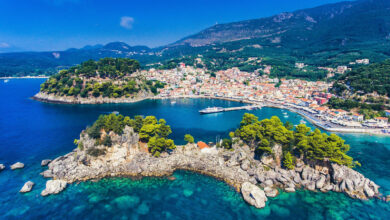Trinidad and Tobago is a twin-island nation located in the southern Caribbean, just off the coast of Venezuela. The two islands have a unique cultural identity that blends African, Indian, European, and indigenous influences. The country has a rich history and has played a significant role in the Caribbean and global economy.
Trinidad, the larger of the two islands, was originally inhabited by indigenous peoples before being colonized by the Spanish in the late 15th century. The island was later ruled by the British and became a major centre for the slave trade. In the 19th century, Trinidad became an important hub for the production of sugar and cocoa, which led to a large influx of African slaves and Indian indentured servants.
Tobago, on the other hand, has a more complex history, with different colonial powers vying for control of the island throughout the centuries. The island was eventually ceded to the British in the 19th century and became a popular vacation destination for wealthy Europeans.
Despite its colonial past, Trinidad and Tobago has become a melting pot of cultures, with a vibrant and diverse population that includes people of African, Indian, Chinese, European, and indigenous descent. This unique cultural blend is reflected in the country’s cuisine, music, and festivals, which are renowned for their diversity and energy.
Trinidad and Tobago has also made significant contributions to the world in terms of music, with the island of Trinidad being known for its steelpan and calypso music. These music styles have influenced many other genres, including salsa, reggae, and jazz, and have been performed all over the world.
The country’s economy is dominated by the petroleum and natural gas sector, which has been a major source of revenue for Trinidad and Tobago since the 20th century. The country is one of the largest producers of oil and natural gas in the Caribbean, and these resources have been a significant factor in Trinidad and Tobago’s economic success. The country also has a thriving tourism industry, with visitors drawn to its stunning beaches, lush rainforests, and vibrant cultural scene.
In conclusion, Trinidad and Tobago is a unique and fascinating country, with a rich history and a unique cultural identity. Its vibrant music and cuisine, diverse population, and thriving economy make it an important player in the Caribbean and the world. The country is a great example of how different cultures can come together to create something truly special and beautiful.
Best Time to Visit Trinidad and Tobago
The best time to visit Trinidad and Tobago largely depends on personal preference, as the country has different attractions to offer throughout the year. Generally, the peak tourist season is from December to May, when the weather is dry and sunny, and the beaches are ideal for swimming and water activities. This period is also when many festivals and cultural events take place, including the world-famous Trinidad Carnival.
The rainy season runs from June to November, and while the weather can be more unpredictable during this time, the country still has a lot to offer. Tobago, in particular, is known for its lush rainforests, which are at their most vibrant during the rainy season. Additionally, the wetter weather can make the beaches more tranquil and less crowded during this time.
Ultimately, the best time to visit Trinidad and Tobago depends on what you hope to experience during your trip. If you’re looking to enjoy the beaches, the dry season is probably your best bet, while those looking for a more immersive cultural experience may prefer to visit during one of the country’s festivals or cultural events.
Average Temperature in Trinidad and Tobago
Trinidad and Tobago has a tropical climate, with warm temperatures and high humidity throughout the year. The average temperature in Trinidad is around 28°C (82°F), while in Tobago, it is slightly cooler, averaging around 26°C (79°F).
However, it is worth noting that the temperature can vary greatly depending on the time of day and the specific location within the country. Coastal areas tend to be warmer and more humid, while areas at higher elevations, such as the Northern Range in Trinidad, can be cooler and less humid.
In general, the temperature in Trinidad and Tobago stays relatively constant throughout the year, with little variation between the hottest and coolest months. The only significant change in temperature occurs when the trade winds shift, which can bring cooler air from the northeast. This typically occurs between December and February and can result in temperatures that are several degrees lower than the average.
Credits
Photo: Pigeon Point Beach, Trinidad and Tobago. Photo by: Renaldo Matamoro on Unsplash



